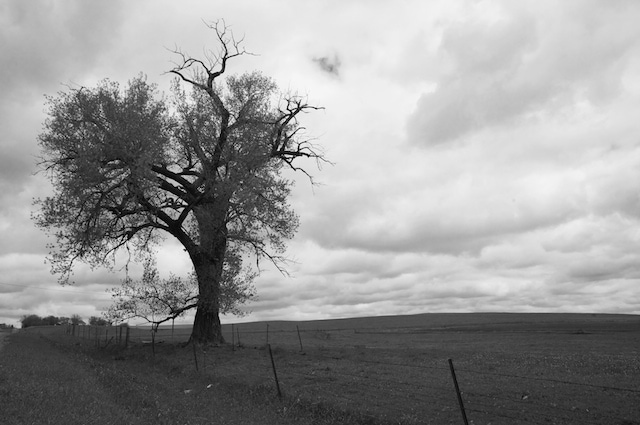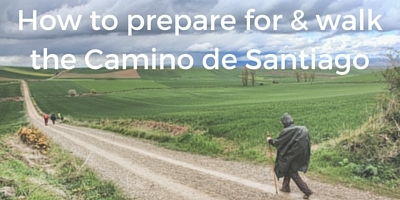I remember the streets crowded with people for Pilger Days, a weekend celebration which happened once a summer. There was cotton candy, music, families walking hand and hand, a cake walk (my personal favorite), a dime toss and a myriad of other carnival games. However, now I walk through the streets of Pilger looking at the run down buildings, closed businesses, houses for sale, and the empty main street; it feels like all of the air has been let out of it, and it’s on it’s last breath. It feels like it’s dying.
Pilger is a small town in Northeast Nebraska with an ever decreasing population of 328 people. It’s your typical farm town; a gas station, a main street, a church, the grain elevator, a small park, and a big water tower. There’s one school serving 5th and 6th grades, there’s a brand new town swimming pool ,and a ball field. I guess that actually sounds like quite a lot of a population of 328.
However it’s missing something crucial, there are no kids running around playing. The park is empty and the main business which is actually still open and running on main street seems to be the Senior Center. The population of Pilger is aging.
Why do I care about Pilger, Nebraska? It’s my parent’s home town – sort of. It’s actually the closest thing to a home town they have as they both grew up on farms about 3 miles outside of Pilger. But for them, Pilger was their ‘big city’. Back then it had a population of 537, and farmers from all around the area gathered there to conduct business, attend social functions, provide their kids an education, and of course to worship.
My parents went to high school in Pilger and had a graduating class of 11 people. My dad played sports there, and my mom was on the cheer squad. The school was brimming with excitement and life. However a number of years ago they moved the high school to a bigger town as there just were no longer enough students in Pilger to keep it running. Pilger now struggles to keep its grade school running. They split up the grades and share the overall schooling with neighboring towns
I found myself in Pilger recently visiting my aunt and took the opportunity to walk around it with my camera. I of course had a few locals stop me and ask me what I was doing…they don’t see strangers walking around with a big camera every day…or ever!
The cemetery on the edge of town seems to be getting bigger and the town seems to be getting smaller. The decreasing population in Pilger has left it with an empty feeling. As I walk around, it feels no different than a town in a foreign country. In fact the lack of energy in the town reminds me of villages in the Gobi Desert. I find the whole thought a little depressing as I see this small town farming culture disappearing in the US – right before my eyes. Is this happening to all small towns in America as the big farmers/companies/cities take over?
The remaining population of Pilger is gearing up for it’s 125th year anniversary in 2012 and my aunt is on the planning committee. I am hopeful my vision of the ‘old PIlger’ will come back to life; the main street full of people and pick-up trucks, a cake walk, and farmers walking around socializing. I have a hard time imagining it now, as I walk around the edges of town surrounded by corn fields. I can’t help but wonder how long it will take for the corn fields to eventually take over the town. All that will be left is the water tower and fuzzy memories.
If you ever find yourself in Northeast Nebraska – I suggest you stop in the small towns and have lunch at the local cafe – it will be a truly cultural experience you won’t forget. You’ll meet some really nice people and probably learn a little history too! Heck – you may even make it into the local paper! In all honestly – I find Northeast Nebraska’s rolling hills to be one of the most gorgeous landscapes I’ve encountered in the world. Yes, not all of Nebraska is flat plains!Some links on Northeast Nebraska:
Northeast Nebraska History and Culture
Northeast Nebraska Travel Council










By Alison June 10, 2010 - 7:32 am
It’s sad that in North America we are losing our little towns and farming communities. Is it really ‘progress’ to lose an entire way of life?
By Donna Hull June 10, 2010 - 11:12 am
It’s sad to see our small towns drying up. I hope that won’t happen to Pilger.
By Vera Marie Badertscher June 10, 2010 - 11:23 am
I came from a small town in Ohio and agree with you about going to the cafe–the one with all the pick-ups parked around it. My father used to travel through Ohio for his job, and always kept a lookout for church suppers. All the ladies in town tried to out-do each other with delicious food. Great tip for travelers.
By admin June 10, 2010 - 11:37 am
Oh my – church suppers (farm food) are the best! Seriously – I think the midwestern culture is fascinating. Whenever I’m back in the small farming communities I try to envision it through a foreigner’s eyes – or imagine if I were in another country what would I think of this. Like most cultures – it’s hard to get an understanding from the outside, but if you have an ‘in’ with a local, then you will be amazed at what you will learn, experience, and eat!
By Alison June 10, 2010 - 11:55 am
Oh yes! Church suppers are great – both for the food and meeting the locals!
By Linda June 10, 2010 - 11:57 am
The same thing is happening to my North Dakota hometown. When it celebrated its centennial in 1982, it was a big deal, with lots of people there. (It never was as big as Pilger; when I was in high school the population was 76.) For it’s 125th, I believe there was a potluck at the fire hall. There’s only one child in the Sunday School at my parents’ church.
Some towns in North Dakota have disappeared altogether, and are being chronicled through photography at http://www.ghostsofnorthdakota.com/.
Thanks for your post, a tribute to the Pilger that you know and love. Thanks for telling its story, which is more common than I wish it would be.
By Anil June 10, 2010 - 3:43 pm
I saw a few of these types of towns in North Dakota, although never really understood why they shrink like this or how small their populations actually were. It’s a pretty sad phenomena – the entire area is really beautiful, not enough people give it the time or credit it deserves.
By Linda June 10, 2010 - 4:05 pm
There are several reasons as to the “why” the towns are shrinking.
Families don’t have 6, 8, or 10 kids like they used to.
Farm equipment can cover more and more ground, and it takes a larger farm operation to be profitable than it used to, so farms are larger and there are fewer families living off the land. Of the ten in my graduating class, six of us had parents who farmed. None of us are farming our parents’ farms, however.
We’ve become much more mobile as a society. When my dad was young, it was a big deal to go to Grand Forks (45 miles away) on the train to get his confirmation suit. Now he and Mom go to Grand Forks 1-3 times a week.
My hometown had a grocery store until the mid-80’s. Now, if Mom runs out of milk, she has to go to the next town, which is 12 miles from home, and buy milk at the bank. That’s right, that town no longer has a store or convenience store, but the bank is still running and has installed a small cooler where you can buy eggs and milk.
My dad and his brothers are still farming as they near 80 years of age. Ten of us cousins (7 girls, 3 boys) grew up on the farm, and none are there any more.
And this is in the eastern, more populated part of North Dakota.
It’s sad to see, but it’s a cycle that’s hard to reverse.
Anil, thank you for your kind words about North Dakota. I agree that many people miss out on its beauty because they think there’s nothing there.
By admin June 11, 2010 - 10:27 am
Linda – great explanation! That mobility is really changing our culture. Both of the farms where my parents grew up are gone now – not one of the kids got into farming. It’s really sad as I have such fond memories of visiting those farms.
By Mark H June 10, 2010 - 6:02 pm
What a sad tale. On my various trips to America, I have always loved having breakfast in these small cafes where such a mix of interesting people come through – some truckers driving past, some local townsfolks catching up and distributing the local gossip, some holiday makers and some family gatherings. I hope that Pilger survives but without youth keeping them going, it will be difficult.
By Shellie Anne June 10, 2010 - 7:19 pm
Why do these small towns die? Economics my dear watson…plain and simple. They just laid off 530 employees at the Stanley Furniture plant in Southern Virginia…no more American made stuff in America, off to CHINA.
YES, SMALL TOWNS DISAPPEAR. The once thriving industrial south is no more. ALL of those families who live in small town USA will me moving and leaving behind the vacant ball fields and the empty pews…
God Bless America.
By admin June 11, 2010 - 10:25 am
Agree – there are no more small farmers either…they can’t survive.
By Laura June 11, 2010 - 8:28 am
Wow- the first picture really does say it all. I really like the photography in this post. It’s a shame to see some small towns dwindle to the point of abandonment. I hope Pilger finds a ‘second wind’ soon!
By DAD June 11, 2010 - 11:06 am
Pilger has always been my home town! This is a sad story for me, but I could see it coming when I was going to the school you had pictured. I left my home town of Pilger shortly after high school and was in the Army for two years then on to college at the big University and on to industry for 35 years, then retired for another 12. However, Pilger is still my hometown! This brief story is why the small towns are dyeing.
I grew up on a small farm and there was not enough to do unless the farm was a lot bigger. The farm was hard work back then with lots of physical labor, but the tractors were doing more and we had to do less. We did not have the capital to expand fast enough to keep up with the rapid changes. I choose to go to college get an education rather than to stay in the small town and end up with a poor job. It was a big decision back then, but I still feel it was the right way for me.
Now Sherry my daughter is writing about my old hometown. Sort of amazing how life plays out.
Thanks Sherry for a tribute to the OLD HOMETOWN
DAD
By jessiev June 14, 2010 - 9:27 am
beautiful photos – it makes me sad that so many small towns are dying out.
By Earl June 14, 2010 - 10:32 am
It’s interesting to hear about farm fields overtaking disappearing towns when we’ve become so used to hearing about nature being overtaken by human expansion. And it is quite depressing to read about, and for those who are forced to witness the change first-hand, I can’t imagine what that must be like.
As you said, hopefully the upcoming anniversary will breathe a little more life back into the town!
By admin June 15, 2010 - 2:12 pm
Good point Earl – I never thought about it as being opposite of the ‘green’ message we so often hear! I guess maybe it does all even out!
By Marcus October 1, 2010 - 2:48 pm
Good to read this and read all your responses as well. I live in London but take every opportunity to head out to the Southwest to travel the smallest roads I can find and hence pass through the smallest, and often on the brink of disappearing, towns, mostly to take pictures and gather stories.
I have no answer, just a nostalgic notion wanting to live in the old house next to the giant cactus one day, but seeing what’s happening that old house may not be there for much longer.
Then again each and every one of those towns has something special that is just there and if you could nurture that, and post it to all the travel guides there are you may get more visitors than you like.
Best of luck
Marcus